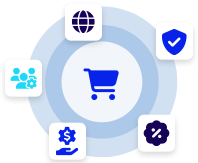SaaS distribution refers to the process of making software applications available to customers or end-users through various channels and strategies. It involves the marketing, sales, and delivery of SaaS products to target customers, ensuring that they can access and use the software effectively.
The distribution of SaaS products is a critical aspect of the SaaS business model as it directly impacts the reach and adoption of the software. Successful distribution strategies help SaaS companies attract customers, generate revenue, and establish a competitive edge in the market.
Some common methods of SaaS distribution in the SaaS industry include:
- Direct Sales: SaaS companies may employ their sales teams or engage in direct sales efforts to reach out to potential customers. This approach involves identifying and contacting prospects, providing product demonstrations, negotiating contracts, and securing subscriptions directly.
- Online Marketplaces: SaaS companies can list their software products on popular online marketplaces or SaaS-specific platforms. These marketplaces act as centralized hubs where customers can discover, compare, and purchase different SaaS applications from various vendors.
- Self-Service Signups: Many SaaS companies offer self-service signups, allowing customers to sign up for free trials or paid subscriptions directly through the company’s website. This approach simplifies the onboarding process for customers and reduces the need for direct sales interactions.
- Partner and Reseller Networks: SaaS companies can collaborate with partners and resellers who promote and sell their SaaS products to their own customer base. Partner networks can expand the reach of the software and tap into new markets.
- Referral Programs: Referral programs incentivize existing customers to refer the SaaS product to others. Referral rewards, such as discounts or extended trial periods, encourage customers to spread the word about the software.
- Content Marketing and Online Advertising: SaaS companies often use content marketing, social media, and online advertising to increase their visibility and attract potential customers to their website. Content marketing, such as blog posts, whitepapers, and educational resources, establishes the company as a thought leader and helps build trust with the audience.
- Freemium Model: Some SaaS companies adopt a freemium model, where they offer a basic version of their software for free with limited features. Users can then upgrade to a premium or paid version to access additional functionalities.
The choice of distribution strategy depends on various factors, including the target market, the complexity of the software, the company’s resources, and the competitive landscape. An effective distribution approach can drive user adoption, customer satisfaction, and revenue growth for SaaS companies in the dynamic and competitive SaaS industry.













